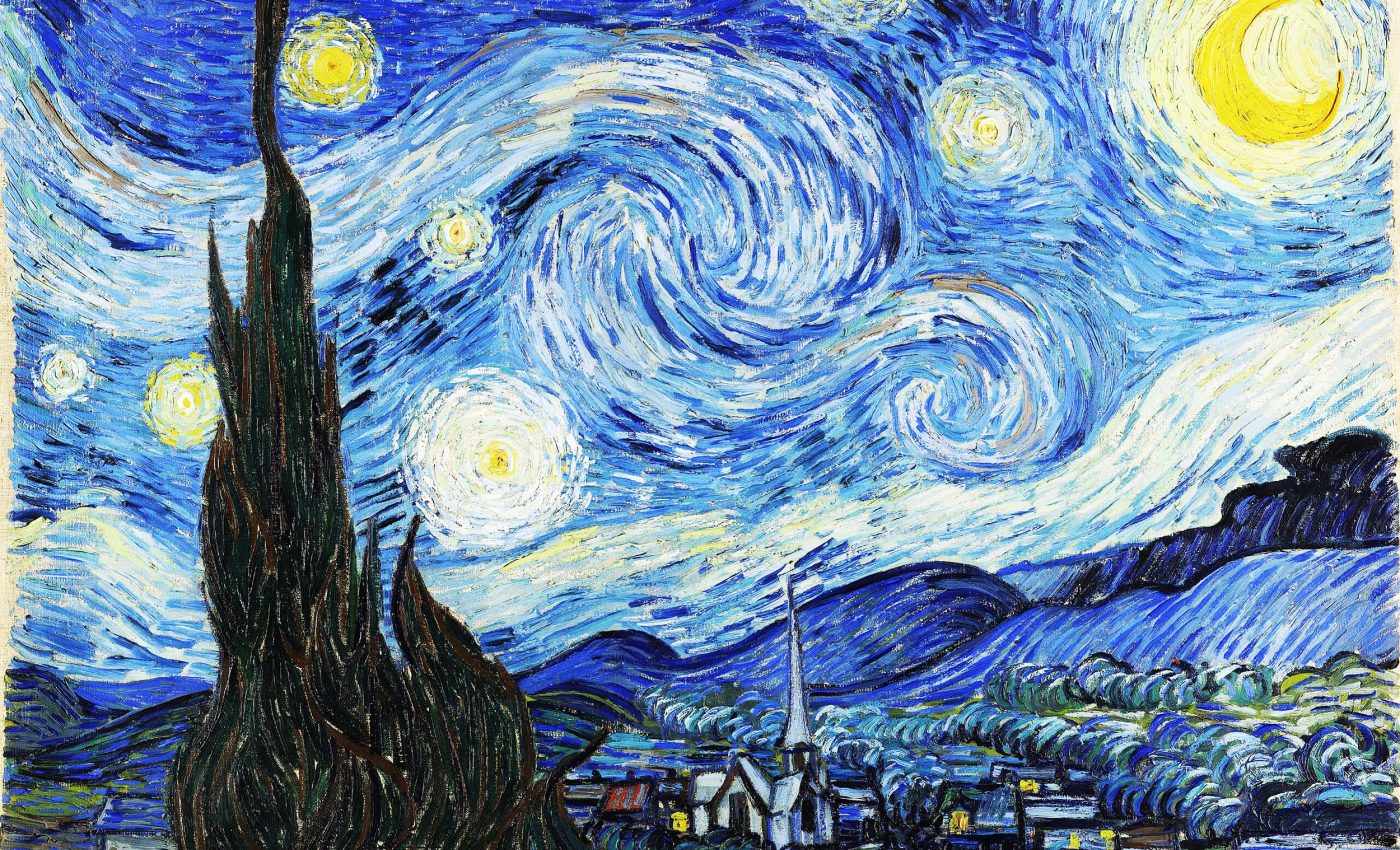
Van Gogh's 'The Starry Night' masterpiece captured real world physics
Vincent van Gogh’s famous painting The Starry Night is renowned for its swirling blue skies and luminous yellow stars, capturing the viewer with its vibrant colors and dynamic brushstrokes.
The painting presents a vision of the night sky that is both enchanting and immersive, with each star encased in radiant ripples, as if the sky itself were in motion.
Van Gogh’s distinctive brushstrokes
The illusion of movement in The Starry Night is so vivid that it has piqued the curiosity of scientists who wonder how closely van Gogh’s depiction mirrors the actual physics of atmospheric turbulence.
While the movement of the sky in the painting is beyond measurement, van Gogh’s distinctive brushstrokes can be scientifically analyzed.
In a study published in the journal Physics of Fluids by AIP Publishing, researchers specializing in marine sciences and fluid dynamics from China and France analyzed van Gogh’s brushwork to uncover what they describe as “hidden turbulence” within the painting.
The team explored the physical properties of the swirling patterns in van Gogh’s The Starry Night and sought to determine whether they align with known principles of fluid dynamics.
Hidden turbulence in The Starry Night
“The scale of the paint strokes played a crucial role,” said lead author Yongxiang Huang, a scientist at the Xiamen University.
“With a high-resolution digital picture, we were able to measure precisely the typical size of the brushstrokes and compare these to the scales expected from turbulence theories.”
To do this, the researchers used van Gogh’s swirling brushstrokes as a model, similar to how scientists would study wind patterns by observing how leaves swirl in a vortex.
The team examined the painting’s use of luminance, or the relative brightness of the colors, to represent the kinetic energy typically found in atmospheric turbulence.
The variation in brightness across the canvas allowed them to draw parallels between van Gogh’s strokes and the flow of energy in real atmospheric systems.
Intuitive understanding of natural phenomena
“It reveals a deep and intuitive understanding of natural phenomena,” Huang said. “Van Gogh’s precise representation of turbulence might be from studying the movement of clouds and the atmosphere, or it could reflect an innate sense of how to capture the dynamism of the sky.”
The team focused on analyzing the spatial scale of 14 prominent swirling shapes in the painting to determine whether they followed the same energy transfer patterns observed in natural turbulent flows.

Specifically, they wanted to see if the painting aligned with Kolmogorov’s law, a theory that describes how kinetic energy cascades from large to small scales in turbulent atmospheric systems.
The analysis revealed that the overall composition of The Starry Night indeed aligns with Kolmogorov’s theory. This was a significant finding, as it suggests that van Gogh’s depiction of the swirling night sky follows the same rules that govern atmospheric movement.
Complexity of Van Gogh’s work
On a more detailed level, within the smaller paint strokes where luminance diffuses across the canvas, the researchers found evidence of Batchelor’s scaling.
This describes how energy behaves in small-scale turbulence, where passive scalar fields (such as temperature or concentration of a pollutant) follow similar energy laws to those in larger-scale flows.
The discovery of both Kolmogorov and Batchelor scaling in one system is rare and was a major motivator for the research team.
It highlights the complexity of van Gogh’s work, suggesting that the artist might have captured an intricate representation of atmospheric physics without the benefit of formal scientific knowledge.
The Starry Night challenges existing theories
“Turbulence is believed to be one of the intrinsic properties of high Reynolds flows dominated by inertia, but recently, turbulence-like phenomena have been reported for different types of flow systems at a wide range of spatial scales, with low Reynolds numbers where viscosity is more dominant,” Huang explained.
He went on to suggest that this study opens up new possibilities for understanding turbulence.
“It seems it is time to propose a new definition of turbulence to embrace more situations,” he added, indicating that their findings in The Starry Night might challenge existing theories and expand the scope of fluid dynamics research.
This research brings a new perspective to van Gogh’s masterpiece, revealing not just artistic genius, but also an uncanny alignment with the laws of nature.
By capturing the hidden turbulence in his night sky, van Gogh may have been unwittingly painting a scientifically accurate representation of the complex and dynamic forces at work in our atmosphere.
—–
Like what you read? Subscribe to our newsletter for engaging articles, exclusive content, and the latest updates.
Check us out on EarthSnap, a free app brought to you by Eric Ralls and Earth.com.
—–













